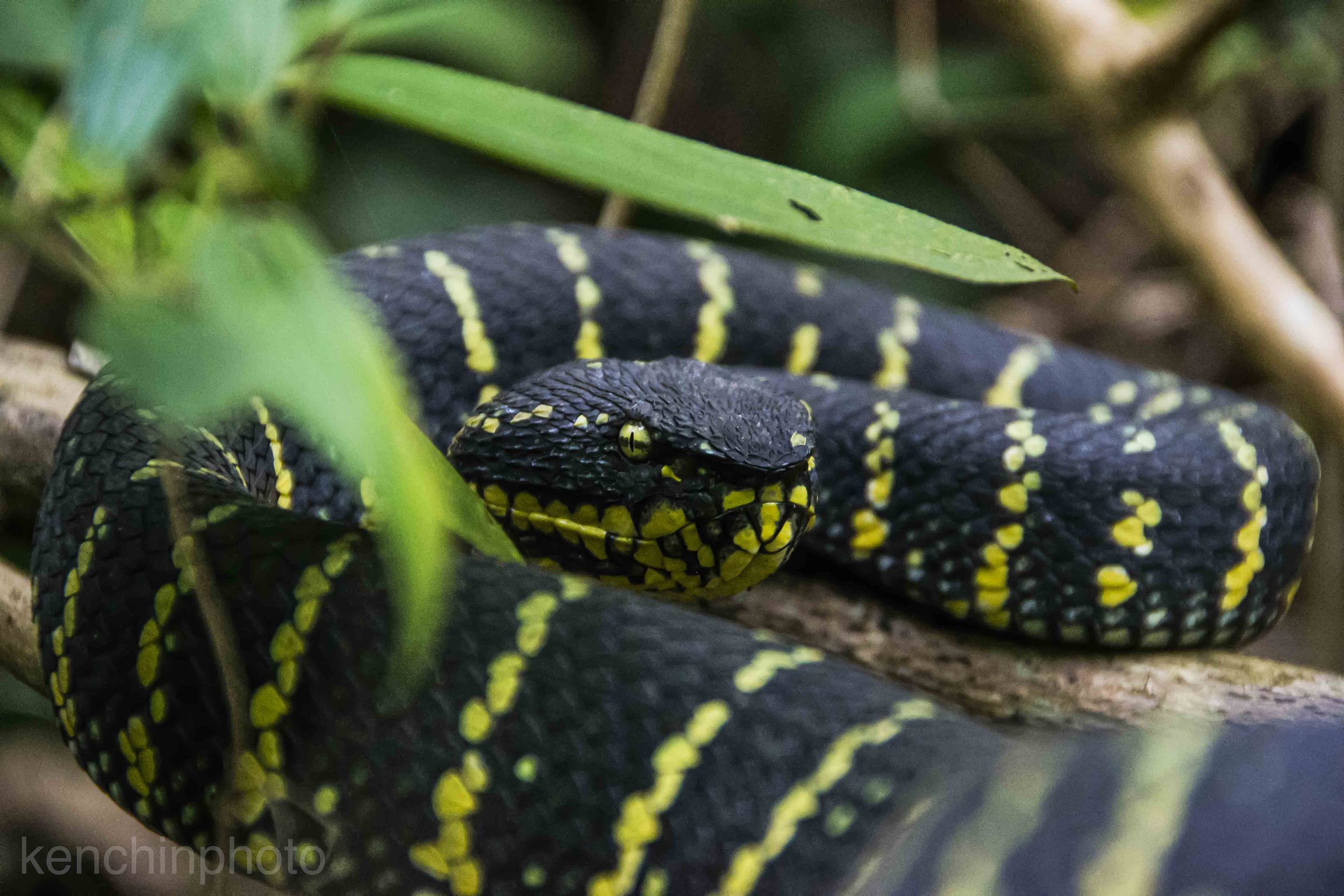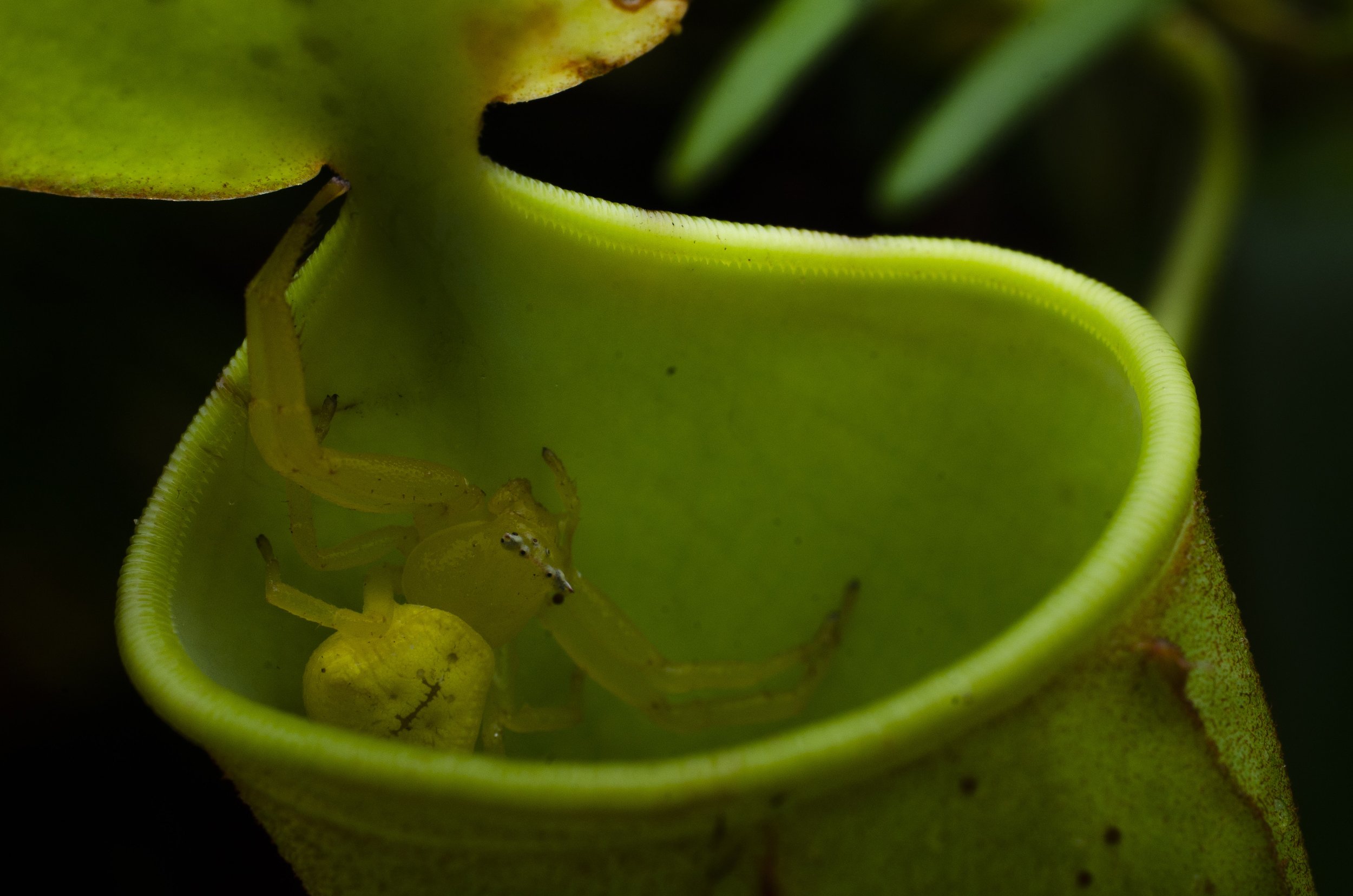
Noteworthy records could be in a form of photography, observation, and documentation.


As I scanned the plants along a freshwater stream, I realised some of these hanging fallen leaves may have residents. I was ecstatic to have been able to witness a rare encounter. A mother lynx spider (Hamataliwa sp.) sits motionlessly, as she watches her hatchlings come out from her egg nest, whom she has been nursing for the past week. This maternal behaviour is often seen in arachnids.


I positioned my camera with a macro lens for hours to observe the activity from the late morning to early afternoon where the temperature of the day reaches its peak. In the early stage, only a few flies visited this flower. Slowly, a carrion fly emerges from the flower column. Rhizanthes lowii is a parasitic plant that possesses nothing plant-like other than its flower, so they have to obtain anything and everything from their hosts in order to survive! They do this through specialised root structures to penetrate the host and gain access to its nutrients. It is also designed to deceive the carrion flies to do the pollination work. In return, they receive little to almost no nectar as food. Some of these flies would lay their eggs because they mistook the flower as a rotting corpse.

A successful use of camouflage for ambush, the Pandercetes sp, (Lichen Huntsman Spider) feasts on its well-waited meal from its vertical hunting grounds. In this case, the fallen prey is another camouflaging spider (Two-tailed Spider - Hersilia sp.). In the end, only the stronger one will survive. These spiders are expertly adapted to the upright domain with their long legs that gives them speed and agility, and cryptic coloration to blend with moss and lichen on the tree bark. They have flattened thorax to stay undetected from both its prey and predators.

In the last known locations in Singapore that show this unique relationship, I scouted one and was elated to have found the last of their kind in the rapidly urbanising Singapore. I looked at multiple cups. A few of them had spiders - Misumenops nepenthicola and Thomisus nepenthiphilus, both are crab spiders. The plant however is widespread in Singapore but not all populations host this mutualism. An adult female T. nepenthiphilus positions herself in an ambush position for unsuspecting visiting insects at the mouth of a Nepenthes gracilis pitcher. Preys like the flesh flies may be harder for the pitcher plant to catch but with the spiders' help, the plants benefit from the excess of their thievery.The spiders would drop the leftover of their meals into the bottom where the plant's digestive liquids would finish them off.

Off on my way to a stream while looking for frogs on Mount Fansipan, I passed by this dead stump and I peeked inside with my torch. Two beetles, Calosoma sp. (Caterpillar Hunters) were consuming a deceased caterpillar, in somewhat looking like an interlocked position which I initially thought they were fighting. This group of interesting beetles is not well known or documented in the region, as compared to their American counterparts. From my understanding, they are nocturnal hence I saw them active that night. Carefully, I approached the beetles with a single diffuser in order not to spook them into scattering away as I photographed them in action.

Walking along a stream in the montane forests of Kinabalu National Park, I was searching for a mossy stick insect. As I slowed down to catch my breath, I chanced upon this strange-looking pile of moss along a log, and it drew me for a closer look. A mossy frog (Philautus macrocelis) from Kinabalu National Park was found in-situ wrapped over the edge of a fallen log. This species is usually active at this time having seen a few of them perched on leaves but never on a log, perhaps the night is young. It has a rough and spiky skin texture which is fun to illuminate. With limited work space, I chose top-down lighting. The eyes are facing down so they appear black, resulting in a mysterious appearance to this portrait.

Knowing about this mutual relationship of the frog and pitcher, in Kubah National Park, my friend and I searched over many clusters of pitchers around the frog pond. We found a frog perching on a cup but it soon slid into the cup as we approached. We decided to continue searching for other frogs and returned to the same spot many hours later. Not wanting to spook it, we approached cautiously to capture this wonderful relationship the frog has with its microhabitat. One of the smallest frogs in the world measuring barely over a centimetre in length, a Microhyla Nepenthicola sits on the edge of the pitcher cup of Nenpthes ampullaria (a distinctive and widespread species). The plant is also known to have relationships with Geosesarma spp.(Vampire crabs) and Kalophrynus limbooliati (Lim’s Sticky Frog). These frogs are documented for their egg-laying behaviour in these cups where their tadpoles are able to thrive in an otherwise inhospitable liquid that was meant to kill. The size of the frog allows them to fit and get out anytime they desire. They are also known to copulate in the cups too.